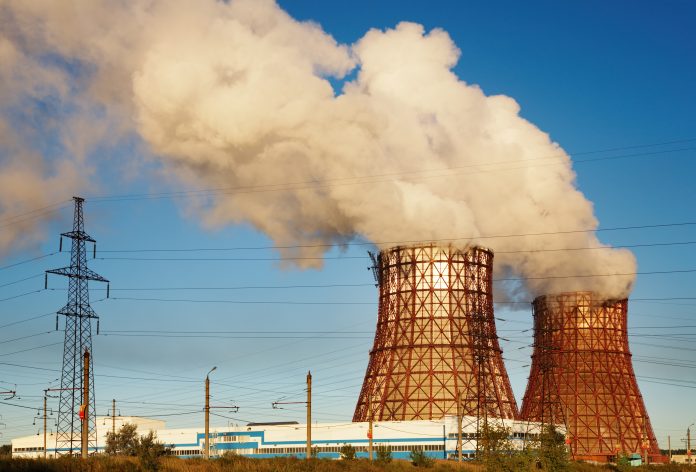Rohit Sen & Michael Adepoju, from the Climate and Energy Action Team at ICLEI, explain how cities can benefit from combined heat and power systems using renewable energy to create urban resilience & fight climate change
The need for efficient heating and cooling services based on renewable energy sources has emerged as an urgent priority for local and regional governments striving to fulfil their climate action plans and local energy targets.
Heating, cooling, and hot water represent 60% of the energy demand in buildings. In light of the climate crisis we face, it is imperative to reduce this energy demand, through building and appliance efficiency improvements, and shifting to efficient and low-carbon sources of energy.
Cities, towns and regions can help meet their energy efficiency, zero energy building, and renewable energy objectives by using modern Combined Heat and Power (CHP) systems, and District Energy (DE) for heating and cooling requirements. The transition to cleaner, more sustainable heating and cooling solutions can attract considerable investment, creating millions of new jobs, and driving a durable economic recovery in the wake of the global COVID-19 crisis.
Combined heat and power = less energy, same amount of benefit
According to the United States Environmental Protection Agency (EPA), national fossil-fuelled power plants run at an average efficiency rate of 33%. Approximately two-thirds of the energy used to produce electricity in the U.S. is wasted in the form of heat discharged to the atmosphere. By recovering the heat, and repurposing it as useful thermal energy, the combined efficiency could increase to 90%, depending on the technology.
Fuel consumption is a significant cost component in energy production, whether for fossil fuel or biomass renewable fuels, in which case the CHP benefits are substantial. Using less fuel to produce the same amount of energy greatly reduces potential greenhouse gas emissions and air pollution. Also, there are significant energy cost savings, waste reduction, and security of domestic fuel supply.
The most common commercial biomass-powered CHP plants are direct-fired systems, where biomass fuel is burned in a boiler to produce high-pressure steam, which, in turn, powers a steam turbine-driven power generator. It is also possible to use other biomass fuel sources such as forest residues, crop residues, energy crops, manure biogas, urban wood waste, wastewater treatment biogas, municipal solid waste, landfill gas, and food processing residues.
One of the most economical near-term options is cofiring. In this case, biomass is introduced to the existing coal-fired plants with little modification. This option is far less expensive than building new biomass power plants and still leads to a considerable reduction in GHG.
CHP builds resilience by creating energy independence
In 1993, Montefiore Medical Center in New York became the first medical facility to install a CHP. With the CHP system in place, it was able to withstand the Northeast blackout of 2003 and Hurricane Sandy in 2012.
A CHP can serve as a form of resilience for critical facilities such as hospitals by operating independently of the electric grid to provide electricity during grid outages.
In the United States, 360 sites currently use microturbines for CHP, accounting for over 8% of the total number of CHP sites and 92 MW of aggregate capacity. Small CHP with District Heating (DH) systems also exist mainly between state-owned buildings, such as hospitals, military, universities and offices.
For commercial or large district heating, the connection of many customers with varying heat demands to a central plant to run continuously instead of many individual plants running sporadically makes economic sense. In addition, biomass and waste incineration CHP is most feasible at large scale.
The economy and efficiency of a CHP for district heating depends on the geographic location as District Network costs form a huge part of the capital investment, but well-maintained DH networks have been predicted to last for about 100 years.
Commercial viability is all about network density
Proximity plays a big role in success. In Helsinki, Finland, CHP with District Heating supplies about 95% of the total heat demand covering about 1,230 km of underground heating networks and more than 10,000 connected buildings, serving over 600,000 residents.
Heat networks are capital intensive and could be affected by access to roads and public land. A basic rule of thumb for the commercial viability of CHP is that the heat/load density should be higher than two MWh per meter of planned network length. In low heat density suburbs, for example, the investment costs of the network are difficult to overcome.
CHP as a powerful ingredient for urban energy transformation
For a more sustainable and renewable heating and cooling sector transition, CHP, with a district heating system powered by renewable energy, offers an economic path to transformation. A long-term, integrated energy plan for heating and cooling is necessary to coordinate the deployment of renewables-based solutions with measures to raise energy efficiency and develop needed infrastructure, while simultaneously avoiding conflicts among pathways and the stranding of assets.
In Finland, about 75% of the district heat production is based on CHP generation, and 33% of electricity is obtained in CHP generation, ranking Finland as the country with the highest market share of CHP electricity in the world, with a district heating network of about 15,000 km.
Cities, towns and regions must focus on cross-sectoral planning to integrate the transition of heating and cooling within sectoral plans, notably power and industry. The local energy plan for heating and cooling must be based on specific needs; macro-economic conditions; availability of resources; the infrastructure already in place; and the level of development, accessibility, and cost of technologies.











